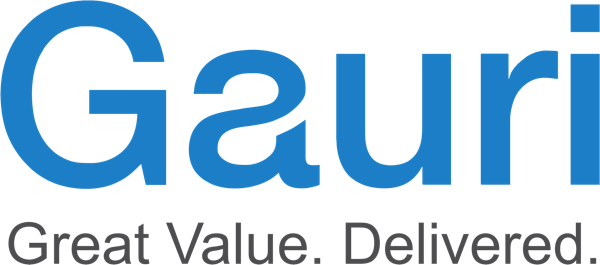For years, Enterprise Service Bus (also called as ESB) had been ruling the integration world and has been the best suited architecture for integrating the enterprise-wide applications and complex processes of on-premise systems. With the technology shift and the advent of cloud technologies, now and then the integration among these systems became more challenging and critical. Leading to the emergence of iPaaS. This definitely poses the question – is it the end of ESB?
Let’s classify ESB and iPaaS to gain a better understanding.
Need
The need for ESB arose when point-to-point integration became tedious over a period of time, while becoming difficult to manage every time a new system needed to be integrated. Point-to-point integrations weren’t managed centrally and were hard to troubleshoot. These codes also referred to spaghetti/custom code which were spread across all the applications – leading to tighter dependencies within the systems. In the end, ESB facilitated a way through using the enterprise service bus; allowing systems to separate from each other. ESB architecture allowed all the applications to be connected to the bus and then communicate, irrespective of the dependency on, or knowledge of the other systems.
In the recent years, implementation approaches have changed a lot following the introduction of SaaS and PaaS services. Much of the business process tasks have been moving to the cloud. Likewise, the need to couple with mobile, big data, and IoT has also gradually increased for enhanced business analytics and simplicity. In the end, leading to increased complexity of the integration between the on-premise and cloud systems. Many businesses have used embedded integration capabilities to solve their user case-specific needs but have ended up with writing custom codes to integrate. Again, point-to-point integration is beginning to come into picture.
Today, businesses are looking for a hybrid and hassle-free solution which will overcome the challenges of integration, now and in the future. iPaaS is the application and data integration platform of the new era which has the capabilities typically found in the ESBs, ETLs and different API management platforms. It helps enterprises to avoid the above point-to-point integration nightmares because the design and administration functions are centralised in iPaaS.
Ad-Hoc Integration
The ESB-based applications are driven by the IT department; creating a dependency. Ad hoc applications require flexible, lightweight and real-time integration. To integrate such application in an ESB is a complex task and requires expertise of the IT department which defeats the whole purpose of ad hoc application initiatives and slows down the delivery of the project. iPaaS solutions meet the demands of simplicity, flexibility and real-time capabilities of fast-paced ad hoc integration.
Recommended
ESBs are recommended for organisations who have complex internal architectures and want systems to be held together, specifically on-premise and legacy systems. If it’s a smaller company with lower IT complexity and less on-premise software, it’s better to go for an iPaaS from the start. iPaaS, on the other hand, offers a more lightweight integration solution better suited for flexible and real-time applications, which are critical requirements of cloud-based services
Multi-tenant Architecture
A multi-tenant architecture refers to a single instance of software running on a single server while serving multiple tenants. A tenant is a group of users who share a common access with specific privileges to the software instance. With a multi-tenant architecture, a software application is designed to provide every tenant a dedicated share of the instance – including its data, configuration, user management, tenant individual functionality and non-functional properties. The ESBs are complex when it comes to achieving the multi-tenancy over it and that’s why it’s not preferred when it comes to multi-tenancy.
On the other hand, iPaaS has its added advantage of multi-tenancy over ESB; ultimately helping complex organisations to significantly reduce administrative and infrastructure costs.
SaaS and IoT Integration
ESBs have been emerging in its integration space with the SaaS-based applications and so-called Lightweight ESBs or cloud ESBs but, haven’t yet reached up to the mark. However, iPaaS has its own lightweight connectors which are best suited for the SaaS integration.
ESB and the IoT integration have been poorly suited due to the nature of IoT integration. IoT devices require lightweight connectivity, low latency required for optimal performance as well as demands for real-time integration which at this moment is a tedious task to be achieved using ESB. An iPaaS simply knows what IoT wants and it provides a necessary combination of high scalability with low latency as well as high performance. Therefore making it easier to conclude that the better integration solution for IoT is iPaaS.
Conclusion
ESB had always been powerful in achieving the on-premise integration scenarios and is most preferred for meeting up the complex integration architectures. It has been continuously evolving in its space and overcoming its grey areas which in fact is good news for the people who are using ESB. Today, iPaaS and ESB are used together by organisations to meet the integration demands of the legacy system as well as staying updated while integrating with the cloud, big data, SaaS, and IoT technologies.
IPaaS is emerging extensively and has been meeting a wide range of capabilities of the existing ESBs, ETLs and application gateways. The product strength is growing with time and consistently meeting the integration demands of the new era. Today companies must reconsider some of the old standards. In addition, it must not lose its focus on the technological advancements in the integration domain. At last, it’s a competitive world!
Co-Authors: Santosh Gadhave and Srinivas Bandi

